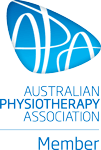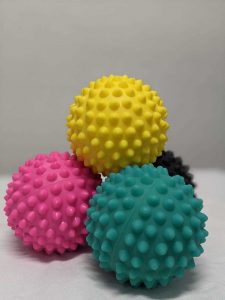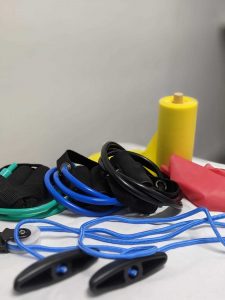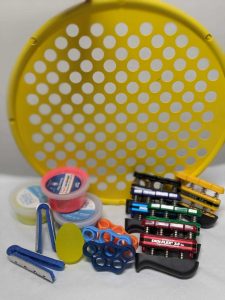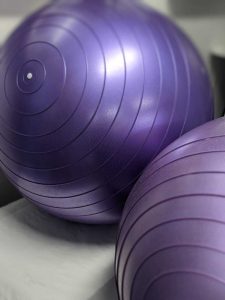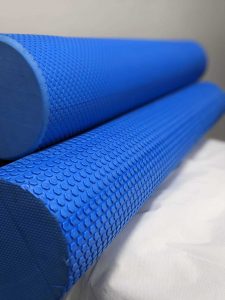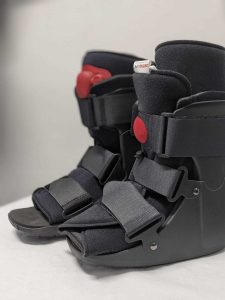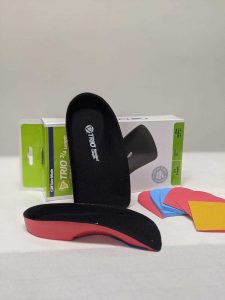Shoulder Injuries
The shoulder region provides physiotherapists with a great challenge. The extreme mobility of the joint with its dependency on muscular function and control means the rehabilitation for this area is probably more crucial than any other part in the body.
Injuries to the shoulder region result from the same two mechanisms as those occurring elsewhere in the body: macrotrauma or repetitive microtrauma. The former generally results from point of the shoulder impact injuries to the ground or between competitors, or due to forces being applied to the outstretched arm.
The overuse injuries are usually due to repetitive, forceful activities frequenting the extremes of range, particularly overhead movements.
Your Sydney Physiotherapist will accurately diagnose and assess this area to determine the best treatment method. There are numerous tests that need to be sifted through prior to a diagnosis made with thorough testing of all joints and muscles.
Acromioclavicular joint
The AC joint is commonly injured in sports especially collision sports, egg AFL. Typically the athlete sustains an impact to the point of the shoulder either from another competitor or when falling to the ground. The angle of the AC joint drives the acromion beneath the clavicle with resultant ligament damage. The site and severity of the ligament damage reflects the forces applied at the time of injury. These are graded from 1-3.
Physiotherapy treatment for this type of injury obviously is dependent on the severity of the injury, and sometimes this may result in surgery as the area is too unstable.
Rotator Cuff Strain / Rupture
Acute strains of the rotator cuff can occur during a fall or wrenching of the arm, or in the event of a strong contraction of the cuff during which the expected transfer of momentum does not eventuate. E.g. a mis-hit tennis backhand or a poorly coordinated hand hard throw.
Rotator cuff tears are also commonly seen by Sydney Physiotherapists and these often are referred to have a scan to determine the degree of tear, sometimes these injuries if severe enough will require surgery.
Rotator cuff tendonitis is also another common cause of shoulder pain seen by Sydney Physiotherapists. Initially the symptoms include pain with overhead activity and weakness. If left unchecked this can result in a complete or partial tear.
Physiotherapy for this injury may include
- Restoration of normal movement
- Rotator cuff strengthening exercises
- Pain management techniques
- Stretching exercises
- Advice on appropriate exercise
Dislocated Shoulder
A dislocated shoulder is a common shoulder injury in contact sports such as rugby and martial arts. The most common form of dislocation is anterior dislocation and unless a doctor or experienced physiotherapist is on site then hospital treatment is required to restore normal function.
The shoulder is generally placed in a sling and shoulder physiotherapy will generally commence after a few weeks.
Physiotherapy will include:
- Restoring normal range of movement
- Soft tissue massage for tight muscles
- Stretching and strengthening
- Proprioception exercises
- Functional rehabilitative exercises
Active physical therapy rehabilitation is usually started after two to three weeks immobilisation in a sling. The goals of physiotherapy treatment for a dislocated shoulder are to restore shoulder stability by strengthening the Rotator Cuff muscles, before increasing shoulder range of movement.
Broken Clavicle – Collar bone
This injury occurs if you fall onto an outstretched arm, where the force is transmitted up the arm causing the collar bone to break.
This injury if sever enough may displace enough to warrant surgery or may just require immobilization for a period of time.
Initially medical advice should be sought and then physiotherapy may commence depending on the severity of the injury
Frozen Shoulder – Adhesive Capsulate
Frozen shoulder or ‘Adhesive Capsulate’ is common cause of shoulder pain in people aged between 40 and 60, with women affected more than men. Physiotherapy treatment is the first option for Frozen Shoulder treatment.
Common Frozen Shoulder signs & symptoms:
- First, shoulder pain comes on slowly and leads to a gradual loss in shoulder movement (Freezing Phase).
- Then there is restriction of shoulder movement, which can last for up to a year (Frozen Phase).
- Gradual increase in shoulder range of motion (Thawing Phase).
This shoulder injury may last for months to years. It is crucial that it is accurately diagnosed and assessed to prevent long term and chronic disability.
Shoulder Bursitis
Shoulder bursitis is a common cause of shoulder pain that is often related to rotator cuff injury and tendonitis. This condition is sometimes called shoulder impingement syndrome. Shoulder bursitis can occur as a result of the Subacromial bursa being squashed or ‘impinged’ between the rotator cuff muscles (Supraspinatus, Subscapularis, Infraspinatus and Teres Minor) and the bone, during repeated overhead shoulder movements.
This condition is characterized by pain with raising the arms overhead and when lying or sleeping on the shoulder.
Similar to shoulder impingement this injury can be treated by your physiotherapist with rest, local treatment such as strengthening rehabilitative exercises and if very severe other medical intervention may be required.
Call 02 9681 3467 or Click Here To Book An Appointment

